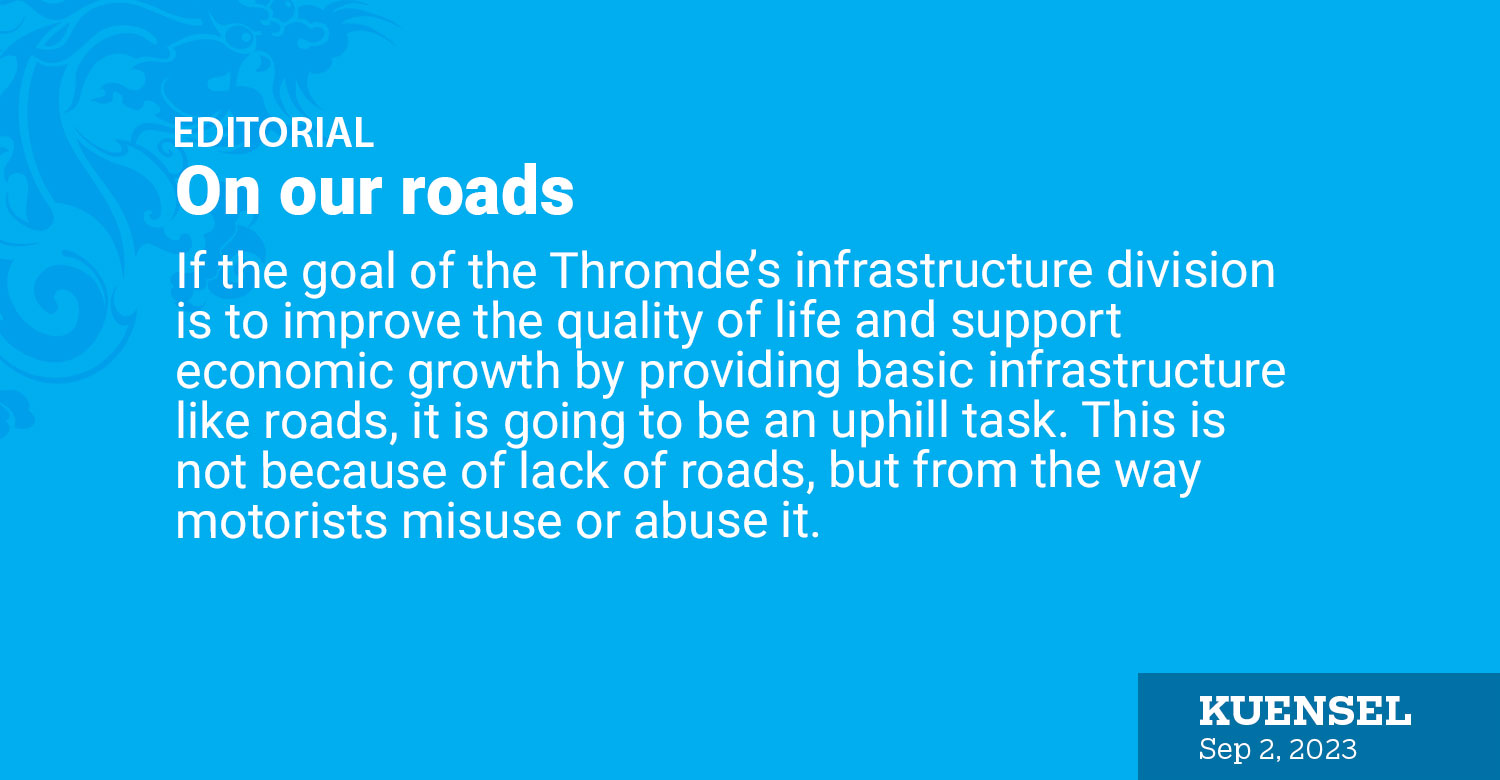If the goal of the Thromde’s infrastructure division is to improve the quality of life and support economic growth by providing basic infrastructure like roads, it is going to be an uphill task. This is not because of lack of roads, but from the way motorists misuse or abuse it.
There are about 281 kilometres of urban road in the capital city. More are being added, existing roads are being widened to adjust more vehicles or ensure smooth flow of traffic. However, it cannot keep up with the increasing number of vehicles.
The result is no surprise. Roads are turned into parking space resulting in congestion. Take for instance the recently widened Zamdo lam at Changzamtog. After it was widened on both sides, it has become worse with vehicles parked on both sides and the thoroughfare becoming narrower. As a bustling part of the town and located at the entrance to the main city, the intention was to make it wide for smooth traffic flow.
Drive down south and we see roadsides becoming parking even as a road widening project is under way in South Thimphu. For motorists, any free space including road shoulders becomes a convenient parking space. There are rules and regulations. There are no followers or monitoring. The traffic division of the Royal Bhutan Police is short of manpower. Even if they have enough, they cannot be everywhere.
What is important is respecting rules. The rules also mandate parking space to tenants when a construction of a building is proposed. It is followed on paper but not on the ground. When there is no parking in the property, the next best space is on the road.
The problem will worsen with traffic getting heavier. The number of vehicles keeps increasing even with a ban on import. Given the current trends, traffic congestion, accidents, and fatalities will only increase. It requires no expertise to come to that conclusion.
Bhutanese drivers too are not the most disciplined or the best trained. The capital city’s roads are not complex unlike in other cities, but many drivers cannot differentiate the fast and slow lanes on the two-lane expressway. A slow moving car in the wrong lane disrupting traffic is a frequent scene during rush hours. Apart from cursing, we do not see traffic police pulling them aside and issuing infringement notices.
With the never-ending increase in vehicle numbers, teaching motorists traffic lessons the hard way seems to be the only solution. Monetary fines hurt drivers. Perhaps, it could be a good source of revenue for the traffic police if a portion of the fines collected under a traffic infringement notice remain with the police and not the finance ministry. It can be ploughed back to develop capacity, improve monitoring, increase manpower and purchase equipment to keep our roads free and safe.


